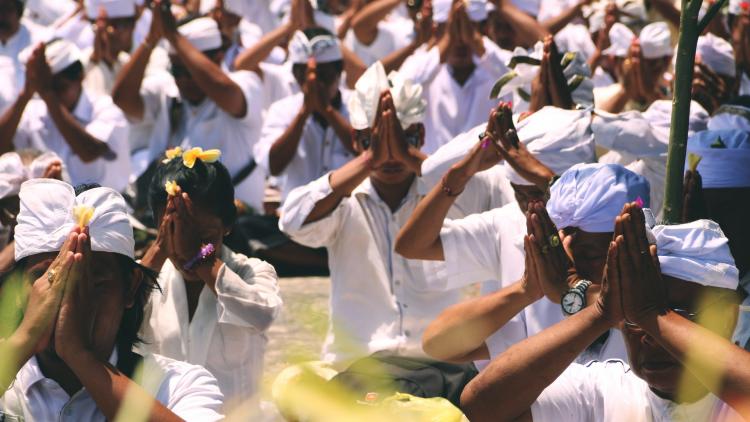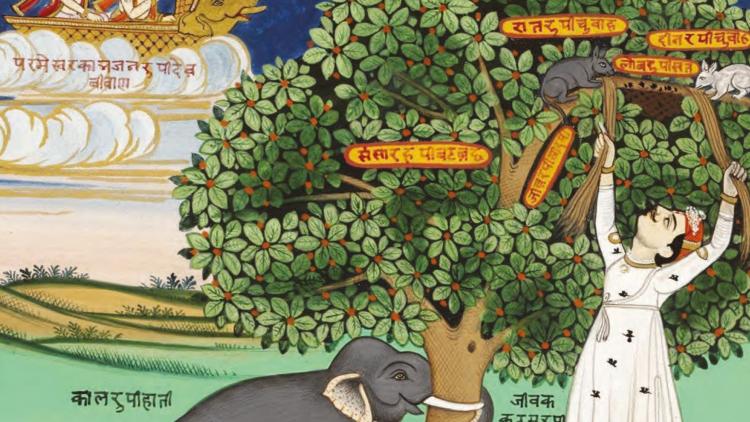Exploratory Survey of the Jaina Heritage in Pakistan


Overview
In and after 1947, almost the entire, already diminished, Jain community migrated out of newly born Pakistan leaving much of its tangible religious and cultural heritage unprotected while the legacy in form of scriptures, temples, historical monuments, archaeological sites and buried antiquity was still largely unmapped. From the partition of subcontinent till now considerable research work has been done in India to document and preserve Jain heritage while there is still no visible activity in Pakistan in this regard except a few research articles and notes here and there.
The aim of the project, sponsored through a gift of Baron Dilip Mehta, is to enhance understanding of the Jain heritage in Pakistan.
Significance
Jainism has a long history in the region of modern Pakistan right from the early historic period. No study has been conducted so far to systematically document this material heritage. Thus it was felt necessary to launch a research project to map and document the Jain heritage of Pakistan. At the first stage a comprehensive survey based on a literature and archival review and a pilot study on the surviving Jaina funerary monuments in Pakistan will be done to provide a solid background for further investigations and heritage mapping. Later, on the basis of its outcome the project is planned to be expanded and combined with conservation projects.
Personnel
- Dr Peter Flügel, principal investigator and lead collaborator
- Dr Tahira Saeed, Deputy Director (BPS-18) National Archives of Pakistan, Islamabad, co-investigator
- Dr Mirza Naseer Ahmad, Deputy Director Nazarat Taleem and HoD Earth Sciences Department, Nusrat Jahan College (NJC) collaborator and project manager
- Muzaffar Ahmad (NJC), research officer
- Ahtesham Aziz Chaudhary, Research Officer at Lahore Museum, collaborator
Publications
- Flügel, Peter. “Stūpa as Tīrtha: Jaina Monastic Funerary Monuments.” Jaina Studies - Newsletter of the Centre of Jaina Studies 7 (2012) pp. 25-27.
- Muzaffar, Ahmad. “Newly Discovered Jaina Caraṇa-Pādukās in Chel-Abdal Chakwal.” Jaina Studies – Newsletter of the Centre of Jaina Studies 10 (2015) 40-42.
- Flügel, Peter and Ahmad, Muzaffar (2018) 'An Exploratory Survey of the Jaina Heritage in Pakistan.' Jaina Studies - Newsletter of the Centre of Jaina Studies, 13. pp. 26-32.
- Photos from the Exploratory Survey of the Jaina Heritage in Pakistan.
References
- Ather, Humaira. “Jainism and Jains in Pakistan.” Thread, Not Scissor: Common Spiritual Heritage for Peace and Harmony. Ed. Ahmad Salim, 113-147. Islamabad: South Asian Research and Resource Centre, 2008.
- Chaudhry, Nazir Ahmad. Lahore: Glimpses of a Glorious Heritage. Lahore: Sang-e-Meel Publications, 1998.
- Duggaṛ, Hīrālāl. Madhya Eśiyā aur Pañjāb meṁ Jainadharma. Dillī: Jain Prācīn Sāhitya Prakāśan Mandir, 1979.
- Fischer, Klaus. “Archaeological Remains of Jainism in West-Pakistan and Afghanistan.” The Voice of Ahinsa (Lord Mahavira. Special Number) 6, 3-4 (1956) 84.
- Gehani, Mohan. “Sindh during the Jain and Buddhist Period.” History of Sindh. Adipur: Indian Institute of Sindhology, 2008.
- Gopal, Surendra. “The Jain Community and Akbar.” Jainism and Prakrit in Ancient and Medieval India. Essays for Prof. Jagdish Chandra Jain. Ed. Narendra Nath Bhattacharyya, 421-430. New Delhi: Manohar, 1994 (also in: IqtidarAlam Khan ed. Akbar and His Age. New Delhi: Northern Book Centre, 1999).
- Jain, Raviṃdar (Ravīndra Kumār) & Puruṣottam Jain. Purātana Paṃjāb Vica Jaina Dharama. Prerikā: Savaraṇa [Svarṇa] Kāntā. Māler Koṭlā: Paccīsvīṃ Mahāvīra Niravāna Śatābadī Saṃyojikā Samiti, Paṃjāb, 1974.
- Jainworld. List of Jain Temples in Pakistan.
- Khan, Muhammad Ashraf. “Jain Temples in Taxila Valley.” Journal of Asian Civilization (Formally Journal of Central Asia) 27, 2 (2004) 3-121.
- Kulhoro, Zulfiqar Ali. “The Jain Temples of Nangarparkar.” Friday Times April 20-26 (2012) 24 (10). https://www.academia.edu/11775817/The_Jain_Temples_in_Nagarparkar
- Kunte, Kashi Nath. Catalogue of Newly Discovered Rare and Old Sanskrit Manuscripts in the Lahore Division for the Year 1879-80. Lahore: Government Press, 1880 (?).
- Kunte, Kashi Nath. Report on Sanskrit Manuscripts for (1) Quarter July to September 1880, (2) Quarter Oct. to December 1880, (3) Year 1880-81, (4) Quarter April to June 1881. Report on the Compilation of the Catalogue of Sanskrit Manuscripts, 1881-82. Together with: Statement showing the Old and Rare Manuscripts in the Delhi and Gujranwala Districts, Punjab, Examined during the Year 1881-82. Lahore: Government Press, 1882.
- Latif, Syad Muhammad. Lahore: Its History, Architectural Remains and Antiquities, with an Account of Its Modern Institutions, Inhabitants, Their Trade, Customs, &C. Lahore: Printed at the New Imperial Press, 1892.
- MacLagan, Edward Douglas. Census of India, 1891. The Punjab and its Feudatories. The Report on the Census. Calcutta: Office of the Superintendent of Government Printing, 1892.
- Marshall, John Hubert. Taxila: An Illustrated Account of Archaeological Excavations carried out at Taxila under the Orders of the Government of India between 1913 and 1934. Vols. 1-3. Cambridge: Cambridge University Press, 1951.
- Ram, Labhu. Catalogue of Sanskrit Manuscripts in the Panjab University Library. Lahore: University of the Panjab, 1932-1941.
- Rose, H. A. Glossary of the Tribes and Castes of the Punjab and the North-West Frontier Province. Based on the Census Report for the Punjab, 1883, by the late Sir Denzil Ibbetson, K.C.S.I., and the Census Report for the Punjab, 1892, by the Hon. Mr. E.D. MacLagan C.S.I., and compiled by H.A. Rose. Vol. II: A-K. Lahore: Civil and Military Gazette Press, 1911.
- Sailer, Waldemar C. “A Note on a Jain Artifact in the Lahore National Museum.” Jain Journal 29, 2 (1994) 47-52.
- Sharma, Mahesh & P.V. Rao. “Salvaging Manuscripts from 1947 Lahore: The Making of an Indology Library.” Bulletin d’Études Indiennes 17-18 (1999-2000) 491-498.
- Siṅgh, Pradyumna Shah. Jainism in Punjab. Patiala: Punjabi University, 2011.
- Sinha, A.N. “Buddhism and Jainism in Punjab.” Sikhism and the Punjab’s Heritage. Ed. Wazir Singh, 108-114. Patiala University, 1990.
- Stein, Marc Aural. Archaeological Reconnaissances in North-Eastern India and South-Eastern Iran. London: Macmillan & Co. London, 1937.



